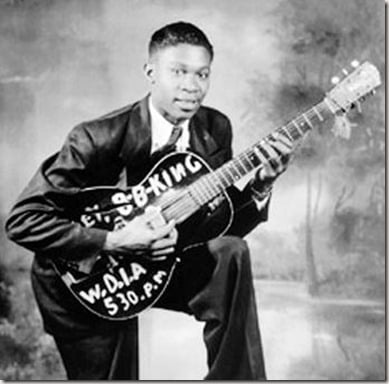Here are the features to look for when looking for a walkie talkie headset for your motorcycle helmet:
Well, riding in a motorcycle usually makes the rider quite vulnerable to various kinds of road and environmental factors. This includes dirt, dust, rain, humidity, and all types of things which one can possibly encounter. Because of this, you should consider getting a completely weatherproof motorcycle helmet intercom. Fortunately, most of the motorcycle intercoms in the market today are weatherproof, water resistant or waterproof. For the best protection from the elements, consider choosing a weatherproof or waterproof intercom, instead of the water resistant ones; this ensures that despite any hazards and rain, your system will be safe, and still work efficiently.
You should also consider getting a system that has a headset speaker for both ears or one ear. This particular factor depends on personal preference as some may find it more convenient to use a one ear headset, while others may prefer both years as some riders like hearing sound in both of their ears. That being so, you should know that installation and moving of the intercom to a different helmet is much easier for the systems which have only one ear.
Another important factor to consider is voice activation. Many systems have the voice activation feature which keeps the headset(s) quiet when no one is talking. The voice activation feature also has the ability to get disabled and a push to talk switch feature can be used instead. Apart from that, sound quality and noise cancellation is something you need to put into consideration. Many motorcycle intercoms have the noise reduction feature with digital signal processing which helps reduce the noises/sounds they pick up from your microphone; this feature is especially important if you are a fast rider.
For those who like riding with some music playing, you should consider going for the motorcycle intercoms which come with either a built in FM stereo, or an auxiliary stereo input for iPod, a Walkman, MP3, or a satellite radio unit. This type of input can also be used to receive driving directions from voice prompted GPS unit.
There are some motorcycle intercoms which can be mounted in your helmet, on your belt clip, on your bike or even put directly to your ears; this usually depends on just how big or bulky the intercom is. Choosing this feature depends on personal preference. You should choose the one that you'd be most comfortable using.
Last but not least, connectivity for cell phones is another crucial factor to consider when choosing a motorcycle intercom. This feature allows you to access the phone’s features while you're on the road. The feature is best paired with hands free operation.
Without a motorcycle intercom, riding can be a very solitary experience. Using an intercom is a great way of clearing your head and putting your thoughts together when you're riding alone. However, if you've a passenger, or you are biking with another rider, sooner or later you'll want to converse with them. A motorcycle helmet intercom will let you do this, and so much more.
That being said, the problem is that there are very many motorcycle intercoms to choose from. And given the fact that motorcycle helmet intercoms need to work in extremely difficult environments, choosing the best one can mean all the difference between enjoying your ride and hating it. Below, we are going to give you the different types of motorcycle helmet intercoms available, to help you make the best choice for your particular needs;
Acoustic Motorcycle Intercom
This is the most basic form of the motorcycle helmet intercoms. With this type of intercom, there are no electronics involved since it uses hollow tubes which have rubber tips that are normally inserted into the rider's ear. A different tube is used as a mouthpiece for talking into, and they both connect through a junction box. This system simply uses the hollow tubes which the voices travel through.
One of the main benefits of a walkie talkie headset is the fact that you'll find no batteries to mess with; this makes them highly reliable. However, there is no amplification which means that there is no way of regulating or adjusting the volume or filtering the wind noise. therefore at high speeds, it'll likely be much harder to listen to. Another issue with this system is the fact that many riders tend to realize that the ear plugs are uncomfortable in their ears for an extended period of time. These acoustic motorcycle intercoms only work with driver to passenger and not bike-to-bike.
Wireless Intercom Technology
This is a most complex and technologically advanced system as it utilizes different forms of radio technologies namely FM, GMRS, FRS and Bluetooth.
FM (abbreviation for Frequency Modulation) is widely used because it's very efficient when it comes to transmitting clear sound, however, if it's used by driver to driver, its' performance isn't good if they're too far apart. It is quite similar to the FM radio you normally listen to, however for the motorcycle intercom, a much narrower frequency is usually used. The FM intercoms work best when there aren't any kind of obstructions (like hills) between the receiver and the transmitter.
If long range is the most important feature, then the GMRS Walkie talkie headsets will offer a much better performance. The FRS (abbreviation for Family Radio Service) and GMRS (abbreviation for General Mobile Radio Service) are the modern equivalents to old walkie talkies you might have used during your childhood days. The FRS intercoms typically have a maximum range of 2 miles provided there are minimal obstructions in between, while the GRMS intercoms can effectively communicate up to several miles. Just Like the FM, these two are public frequencies which means other people can get to hear your conversations, and vice versa. In some heavily populated areas these FRS/GRMS radios are heavily used, while out on the open road you should enjoy fairly private conversations.

One great thing about using the FRS or GMRS walkie talkie headset is that you can visit headsetonline.co.uk and purchase a walkie talkie headset and handheld radio which you can use to contact these units. In case someone is following you in a car, or they have a wired intercom system which allows them connect to an FRS or GMRS handheld radio, they will be able to communicate with you. The only downside is that you'll find countless of these radios in the heavily populated areas and you'll end up picking up lots of other transmissions.


















